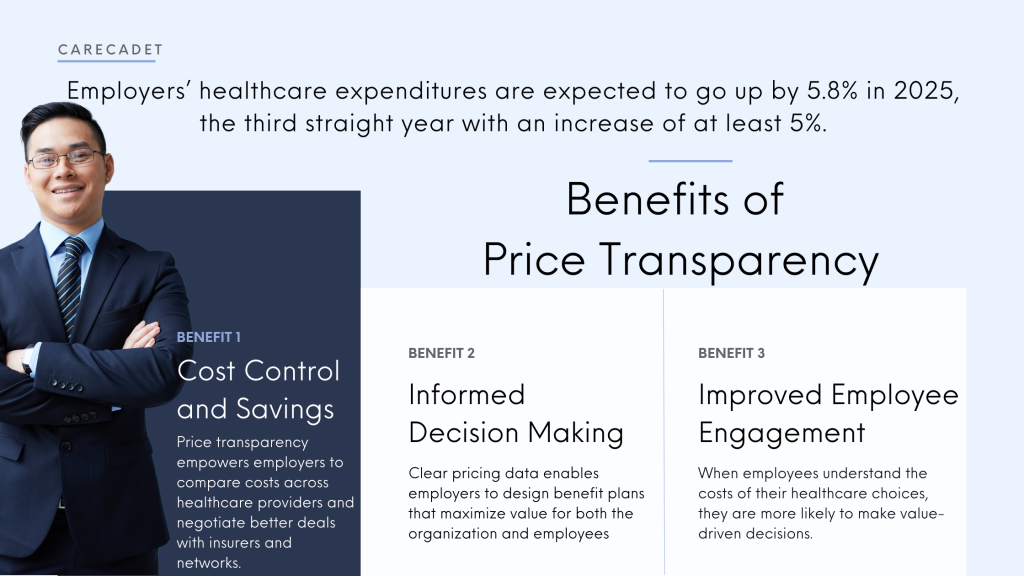
The rising cost of healthcare is one of the most pressing challenges facing employers today. A survey released in September 2024 from Mercer found that employers expect costs to go up by 5.8% in 2025, the third straight year with an increase of at least 5%.
For many organizations, healthcare represents a significant portion of overall expenses, on many occasions it is the second largest expense for employers behind payroll. Yet it often remains one of the least understood areas of spending due to opaque pricing structures. Price transparency in healthcare has emerged as a powerful solution, enabling employers to make more informed decisions, reduce costs, and improve employee satisfaction.
What is Healthcare Price Transparency?
Healthcare price transparency involves making the costs of medical services, procedures, and medications clear and accessible to consumers before they receive care. It includes detailed information about the prices charged by hospitals (Hospital Price Transparency Rule) and the negotiated rates for services between insurers and providers (Transparency in Coverage Rule). The aim of these regulations is to help individuals and organizations to understand the true cost of healthcare services.
Why We Need Price Transparency in Healthcare?
The U.S. healthcare system is notorious for its complexity. Employers and employees alike often struggle to understand the costs associated with services, leading to unexpected bills and inefficiencies. Lack of transparency can result in:
- Overpayments for services that could be accessed at lower costs elsewhere. For example, superior court orders health insurance companies to pay over $165 million for deceptive sales scheme that cheated Massachusetts consumers
- Frustration among employees who face unexpected out-of-pocket expenses. For example, surprise out-of-pocket costs have a big effect on the U.S. workforce.
By embracing price transparency, employers can tackle these challenges head-on.
How Price Transparency Benefits Employers ?
Cost Control and Savings
Price transparency empowers employers to compare costs across healthcare providers and negotiate better deals with insurers and networks. For instance, knowing the price difference for an MRI at a hospital versus an imaging center allows organizations to steer employees toward cost-effective options without compromising quality.
Informed Decision Making
Clear pricing data enables employers to design benefit plans that maximize value for both the organization and employees. For example, high-deductible health plans (HDHPs) paired with health savings accounts (HSAs) can work more effectively when employees have access to transparent cost information.
Improved Employee Engagement
When employees understand the costs of their healthcare choices, they are more likely to make value-driven decisions. Providing tools that highlight price variations across providers can encourage employees to seek high-quality care at a lower cost.
Enhanced Trust and Loyalty
Transparent communication about healthcare costs builds trust with employees. It demonstrates that the organization is committed to helping them make informed choices and manage out-of-pocket expenses effectively.
As healthcare regulations continue to evolve, price transparency is becoming a cornerstone of the industry. Employers who embrace this trend will not only reduce costs but also empower their employees to take control of their healthcare decisions. Care Cadet is committed to help you and your employee to find quality healthcare at transparent prices when you need them, where you need them. You can also explore our cash prices here. For more details, drop us an email at info@carecadet.com.
